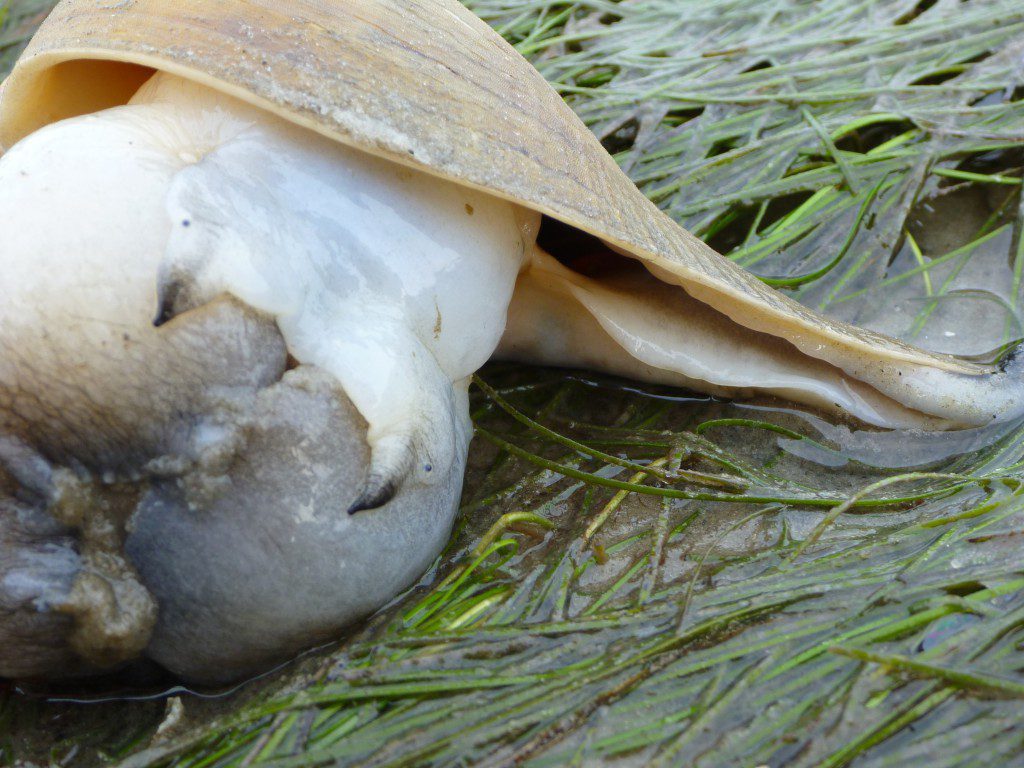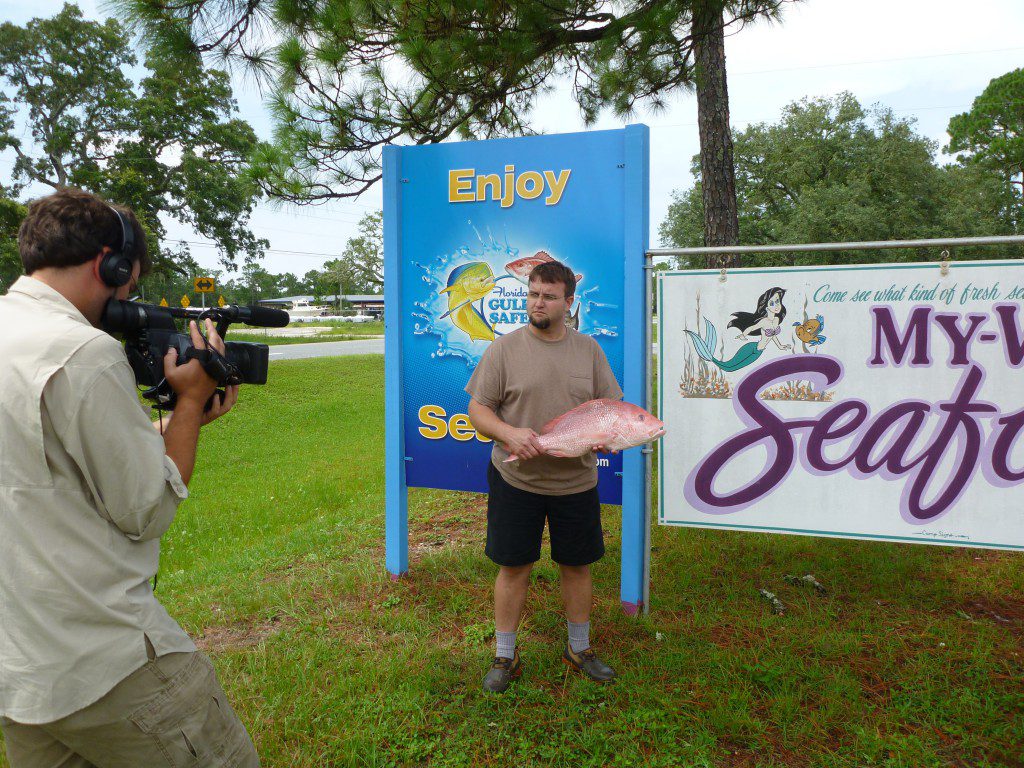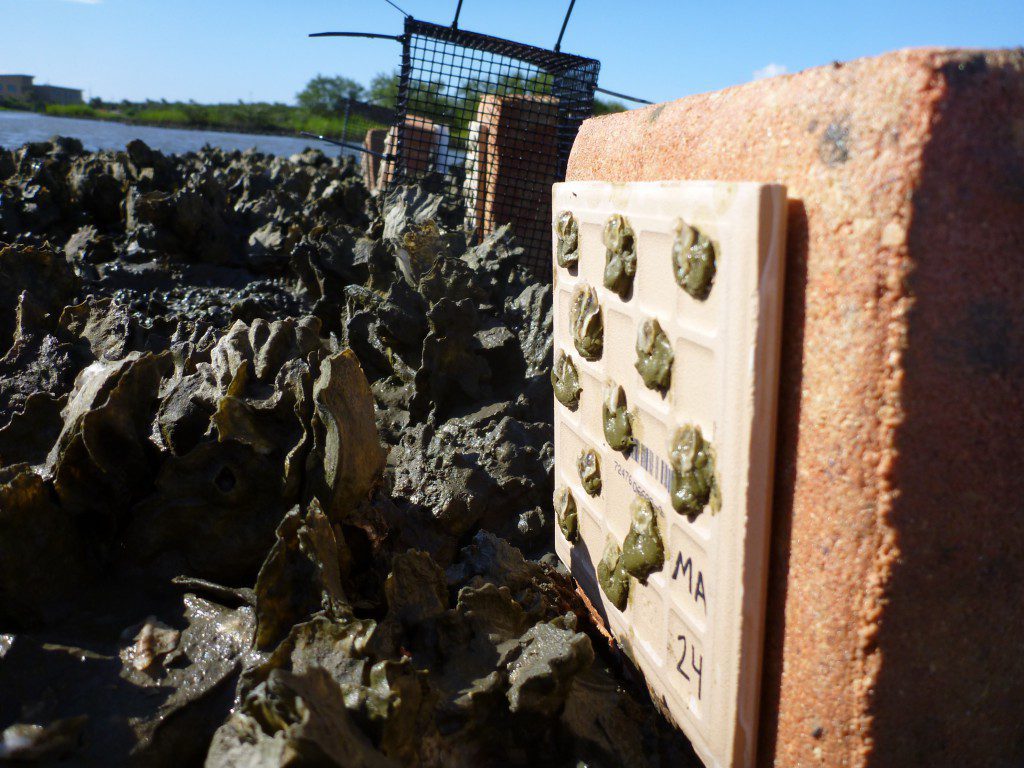Episode 1: Where the Land Meets the Sea
Rob Diaz de Villegas WFSU-TV
This time around, everything is both familiar yet new.
I recently went to Saint Augustine to document the second version of Dr. David Kimbro and Dr. Randall Hughes’ tile experiment. The basic concept is this: attach a certain amount of oyster spat (larval oysters- basically little blobs in the process of growing and building shells) to tiles, leave them on or by oyster reefs and see how they grow, or if they are eaten. I’ll let Randall and David explain the intricacies of the experiment when we post those videos in January. Or, you could watch our coverage of that first experiment, conducted in the fall of 2010. Watching that video and then watching our new videos on the experiment, you’ll notice that both the approach to the experiment and to the video coverage have evolved. After the Kimbro lab spent so many long days scrambling to collect spat, The 2010 experiment didn’t succeed like they’d hoped. Likewise, our communication of their research, and the importance of the ecology of intertidal ecosystems, didn’t quite succeed like I had hoped. I like watching the old videos; I just don’t think they did what we wanted them to. But you learn, and hopefully, you improve.
This time around, I was struck by how orderly everything was at the Whitney Lab as the oyster crew prepared their tiles. No more scrambling out at low tide to collect oysters; they had hired someone to breed spat from oysters spanning the Eastern seaboard. The current tile design and construction had been tested, and would withstand the elements. Randall and David had learned lessons, and were efficiently implementing their new plan. But what had I learned?

This attractive gastropod, seen in the video above, is a busycon snail wrapped around an atlantic moon snail that it just happens to be eating. Nature videos have a cast of human, animal, and plant characters.
Early last year, WFSU had a moment equivalent to that of the Hug-Bro labs’ realization that the glue on their initial tiles couldn’t withstand the waves at their sites. The National Science Foundation had rejected our grant application to fund this project. After a few months of following their studies and a couple dozen videos, a panel of reviewers let us know everything they thought we did wrong. That was fun.
When Randall, David, Kim Kelling-Engstrom (WFSU’s Educational Services Director) and I decided to reapply for the grant, we needed a new narrative for what it was that we wanted to communicate. What was our story? If you watch our old videos, we’re very narrowly focused on experiments and field work. There’s a lack of perspective on the impact of the ecosystems on our area, a lack of local color from the excellent locations we visit, and I kind of feel like we could have better captured what a day on a salt marsh or oyster reef was like. The new application reflected more of the world around the reefs and marshes, and the people who need them. If you’ve watched the video above, you may have figured that this time, our application was successful.

The red snapper being held by Ike Thomas, owner of My Way Seafood, was caught in 150 feet of water. Before reaching market size, younger snapper are one of many fish species that forage on oyster reefs.
I’m finding the new videos are more fun to put together. We’re exploring the area more, talking to more people, and it’s easier to spot the animals we care about and get footage of them. And with funding we have some extra staff helping on the blog and on shoots (like new associate producer Rebecca Wilkerson). The upcoming videos are like the new tiles sitting in their cages off of Saint Augustine oyster reefs: they are the product of some hard won knowledge. That experiment ends soon and they’ll see if they get the data they needed to meet their larger goals. We, on the other hand, are just getting started, and we hope that you’ll keep joining us as we explore that area where the land meets the sea.
Over the next couple of weeks, we see the WFSU SciGirls visit the FSU Coastal & Marine Lab to learn about what Randall does: in the marsh, at the lab, and in front of the camera. It gets a little messy. In September, we go in the field with Randall and David onto oyster reefs and into seagrass beds and salt marshes.
In the Grass, On the Reef is funded by a grant from the National Science Foundation.


2 comments
[…] Halfway through yesterday’s paddle, we started smelling salt. The River provides for the Bay, but the Bay gives a little to the River, too. Many of the fish that make use of the oyster reefs and seagrass beds in Apalachicola Bay come up the river. Rick even saw a blue crab swimming at one point, over twenty miles up the River. Next week’s video explores the real value of the oyster reef, and how its influence can be felt beyond our coasts. If you haven’t seen the first of our second series of interviews, it sets up the commercial importance of the intertidal ecosystems such as those that found in and around Apalachicola Bay. You can watch it here. […]
[…] It took a couple of years, but in July we received a Communicating Research to Public Audiences grant from the National Science Foundation. The name of that grant is meaningful, and it embodies a background narrative of this project: the work it takes to make an average person care about scientific research. Researchers know why their work is important, they just don’t always know how to present why it’s interesting. That’s why we had Dr. Olson come in and put on a workshop for research students (and Randall and David). So why is Randall and David’s research important? […]
Comments are closed.